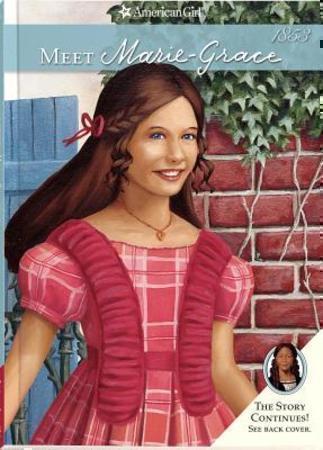 Meet Marie-Grace: Marie-Grace Gardner has just arrived in New Orleans, and she hopes she never has to move again. The lively city is unlike any other place Marie-Grace has lived. When she meets Mademoiselle Océane, a talented opera singer, Marie-Grace longs to take lessons. She loves to sing, and she would like to get to know Cécile Rey, the confident girl who is Mademoiselle’s student. But Marie-Grace is shy, and starting school reminds her how hard it is to make friends and fit in. Can an unexpected adventure help her feel as if she belongs in New Orleans? Includes an illustrated “Looking Back” essay about the history of New Orleans.
Meet Marie-Grace: Marie-Grace Gardner has just arrived in New Orleans, and she hopes she never has to move again. The lively city is unlike any other place Marie-Grace has lived. When she meets Mademoiselle Océane, a talented opera singer, Marie-Grace longs to take lessons. She loves to sing, and she would like to get to know Cécile Rey, the confident girl who is Mademoiselle’s student. But Marie-Grace is shy, and starting school reminds her how hard it is to make friends and fit in. Can an unexpected adventure help her feel as if she belongs in New Orleans? Includes an illustrated “Looking Back” essay about the history of New Orleans.
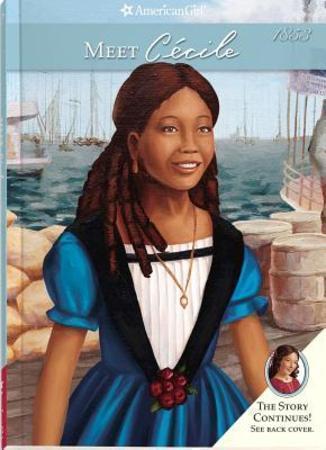 Meet Cécile: Cécile Rey can’t wait for Mardi Gras—New Orleans’ dazzling season of parties and costume balls. For the grandest event of all, the Children’s Ball, Cécile is determined to come up with a fantastic costume like no one else’s. Everyone will notice her! And after Mardi Gras, Cécile’s beloved brother, Armand, will finally come home after two long years in faraway France. But Mardi Gras season turns out to be even more exciting than Cécile expects when she meets a new girl named Marie-Grace Gardner. Together they form an unlikely friendship and share a daring adventure! Includes an illustrated “Looking Back” essay about the history of free people of color in New Orleans.
Meet Cécile: Cécile Rey can’t wait for Mardi Gras—New Orleans’ dazzling season of parties and costume balls. For the grandest event of all, the Children’s Ball, Cécile is determined to come up with a fantastic costume like no one else’s. Everyone will notice her! And after Mardi Gras, Cécile’s beloved brother, Armand, will finally come home after two long years in faraway France. But Mardi Gras season turns out to be even more exciting than Cécile expects when she meets a new girl named Marie-Grace Gardner. Together they form an unlikely friendship and share a daring adventure! Includes an illustrated “Looking Back” essay about the history of free people of color in New Orleans.
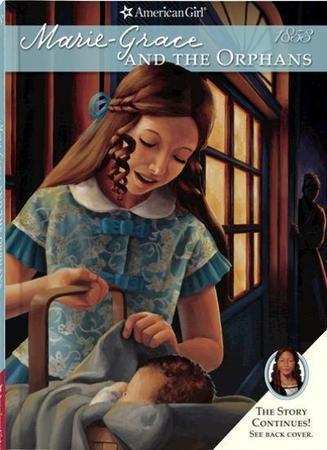 Marie-Grace and the Orphans: Marie-Grace can’t believe what she finds on her doorstep one rainy night: a baby! More than anything, Marie-Grace hopes her father will let the little boy stay with them. But when a slave-catcher comes looking for him, Marie-Grace realizes the baby is in terrible danger. Together, she and her friend Cécile come up with a way to keep the child safe. Just when Marie-Grace thinks their plan will work, rumors of a deadly fever begin to swirl through New Orleans. Soon Marie-Grace wonders if anyone will be safe. Includes an illustrated “Looking Back” essay about orphanages in the 1800s.
Marie-Grace and the Orphans: Marie-Grace can’t believe what she finds on her doorstep one rainy night: a baby! More than anything, Marie-Grace hopes her father will let the little boy stay with them. But when a slave-catcher comes looking for him, Marie-Grace realizes the baby is in terrible danger. Together, she and her friend Cécile come up with a way to keep the child safe. Just when Marie-Grace thinks their plan will work, rumors of a deadly fever begin to swirl through New Orleans. Soon Marie-Grace wonders if anyone will be safe. Includes an illustrated “Looking Back” essay about orphanages in the 1800s.
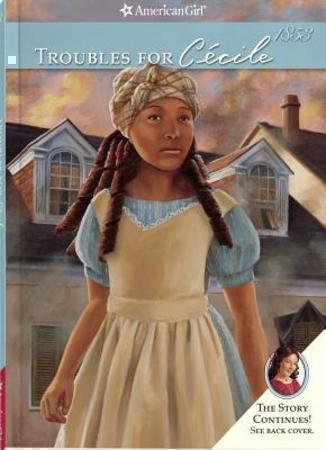 Troubles for Cécile: Cécile’s summer is off to a glowing start. She loves spending time with her older brother, Armand, who is finally home from France. And she and her friend Marie-Grace enjoy helping at a nearby orphanage, playing with the children. But a shadow falls over the bright summer when Cécile hears that a terrible sickness—yellow fever—is spreading in New Orleans. When yellow fever strikes in her own home, Cécile is more afraid than she has ever been before. Can she find the strength to help when her family needs her most? Includes an illustrated “Looking Back” essay about the yellow fever epidemic of 1853.
Troubles for Cécile: Cécile’s summer is off to a glowing start. She loves spending time with her older brother, Armand, who is finally home from France. And she and her friend Marie-Grace enjoy helping at a nearby orphanage, playing with the children. But a shadow falls over the bright summer when Cécile hears that a terrible sickness—yellow fever—is spreading in New Orleans. When yellow fever strikes in her own home, Cécile is more afraid than she has ever been before. Can she find the strength to help when her family needs her most? Includes an illustrated “Looking Back” essay about the yellow fever epidemic of 1853.
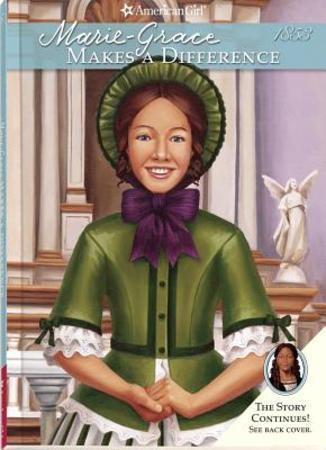 Marie-Grace Makes a Difference: Marie-Grace is worried. Yellow fever is raging through New Orleans. The orphanage where she and Cécile have been volunteering is becoming crowded with children who have lost their parents to the dreadful disease. And now someone Marie-Grace cares about is terribly ill. When the chance comes to help, Marie-Grace takes it. She knows she can make a difference. But will this horrible fever cause Marie-Grace to lose the home and family she loves? Includes an illustrated “Looking Back” essay about health and medicine in the 1800s.
Marie-Grace Makes a Difference: Marie-Grace is worried. Yellow fever is raging through New Orleans. The orphanage where she and Cécile have been volunteering is becoming crowded with children who have lost their parents to the dreadful disease. And now someone Marie-Grace cares about is terribly ill. When the chance comes to help, Marie-Grace takes it. She knows she can make a difference. But will this horrible fever cause Marie-Grace to lose the home and family she loves? Includes an illustrated “Looking Back” essay about health and medicine in the 1800s.
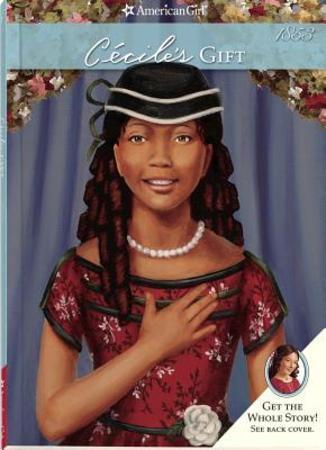 Cécile’s Gift: Cécile and her friend Marie-Grace volunteer at Holy Trinity Orphanage every week, and Cécile becomes especially close to a little girl named Perrine. But there are so many children who have lost their families to yellow fever, and Cécile wishes she could do more to help them. When she hears that a huge benefit will be held to raise money for all the orphans in New Orleans, she is determined to take part. But what can Cécile give to the orphans to lift their sad hearts and let them know she cares? Includes an illustrated “Looking Back” essay about communities working together to help those in need in the 1800s.
Cécile’s Gift: Cécile and her friend Marie-Grace volunteer at Holy Trinity Orphanage every week, and Cécile becomes especially close to a little girl named Perrine. But there are so many children who have lost their families to yellow fever, and Cécile wishes she could do more to help them. When she hears that a huge benefit will be held to raise money for all the orphans in New Orleans, she is determined to take part. But what can Cécile give to the orphans to lift their sad hearts and let them know she cares? Includes an illustrated “Looking Back” essay about communities working together to help those in need in the 1800s.
**Synopses of the Marie-Grace and Cécile books provided by American Girl
